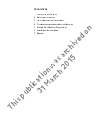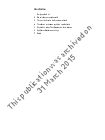Milk quotas: overview
Information for quota holdings about the Milk Quota Scheme, the types of quota available and what holders of milk quotas must do.
The UK’s milk quota is divided between individual holdings (called quota holdings). An individual quota is the amount of milk that a quota holding has and is allowed to deliver or sell direct before being liable for a levy. A quota is attached to the holding so if a holding changes hands, the new occupant may be entitled to register the quota in their name.
Quota holdings
A holding is defined as all of the areas of land occupied by the producer within the territory of an EU member state. This means that if your business has more than one farm, the farms will count as a single holding for the purposes of the quota regulations, even if they are in different parts of the UK.
What quota covers
Quota covers all milk and milk products, including liquid milk, butter, cheese yoghurt and ice cream. It also includes colostrum.
All milk that leaves a holding counts against a quota, even if the producer does not receive money for it. This includes milk contaminated with antibiotics. Contaminated milk disposed of on the holding does not count against quota.
The fat content of the milk is taken into account when calculating the quota amount.
The quota register
This register lists the:
- names and addresses of all milk quota holders
- amounts of quota they hold
- butterfat base of wholesale quota
- details of the purchaser(s) with whom the wholesale quota is registered
You must register with the Rural Payments Agency (RPA) if you:
- hold a milk quota
- produce milk
- deliver to a purchaser or market as direct sales
Changes to the quota register
You must tell RPA immediately of changes to:
- trading title
- correspondence address
- the status of your business (for example, if you begin trading as a limited company)
- members of a partnership (even if the trading title has not changed)
- bank details (to enable you to receive payments by BACS)
- VAT number
If you need to inform RPA of any new trading title or change of address, use or .
Types of quota available
There are two types of quota:
- wholesale quota: for the delivery of milk to an approved milk purchaser
- direct sales quota: for the marketing of milk or milk products direct to the public
Producers who supply milk both wholesale and direct to the public need a separate quota for each type of transaction. You can convert from one type to the other to cover production if this is necessary.
Milk producers who sell their milk wholesale may only sell to an approved milk purchaser. Those who hold a wholesale quota must register their quota with an approved purchaser.
Share farming
The application of milk quota rules to milk production under share farming arrangements can be complex so contact RPA.
Registering quota with a milk purchaser
If you are a wholesale quota holder, you must register your quota with one or more milk purchasers who have been approved by RPA.
You should ensure that adequate quota is registered with each of your milk purchasers, to cover deliveries in order to avoid a levy.
If you have quota registered with more than one purchaser, you can apply to move it temporarily between them. Use form
Producers who change purchasers must make sure they leave sufficient quota with their original purchaser to cover butterfat adjusted deliveries already made.
Contact the RPA’s Milk Quotas team on 01392 315700 for more advice on this.
Changing your milk purchaser
If you change milk purchaser, your new purchaser must send RPA by 14 May following the end of the quota year.
Managing quota
The milk quotas system allows producers to adjust their quota to match the amount they are producing. They can:
- convert between wholesale and direct sales quota
- increase or decrease their available quota by leasing or transferring quota
If you wish to apply for temporary conversion of direct sales quota to wholesale or vice versa, you must complete the relevant section of your MQ15 Annual declaration of direct sales. Contact the RPA’s Milk Quotas team on 01392 315 700 for more advice on this.
Recording the milk you produce
You must record how much milk your herd produces each:
- day
- month
- year
Herd records
Your herd records must cover all the cows and calved heifers used for milk production, including:
- their breed
- how many are in milk
- how many have run dry
- the date of any births
- the details and dates of any deaths
You must also keep records of stock joining or leaving your herd, including:
- their origin or destination
- the date you moved them
- their identification marks
You must also keep invoices for any feed purchased for the herd.
Permanent quota records
You must always have a record of:
- the quota you hold permanently
- any leases of quota you have been involved in
- any transfers of quota you make
Other records you must keep
You must record the quantities and type of milk and milk products that have been produced on the holding that you have, including:
- transferred free
- destroyed under licence from Defra or any other government body
- fed to livestock on the farm
- used for domestic consumption
- wasted on farm
You must also keep details of milk you have sold to a wholesale purchaser, including:
- the quantity supplied
- the purchaser’s name and address
- payment slips from the purchaser
- tanker receipts, where there are discrepancies between the original purchaser’s payment slip and the tanker receipt
Failure to maintain records will result in a penalty being raised under the relevant regulation within the Dairy Produce Quota Regulations.
RPA inspections
Throughout the year, RPA may carry out additional checks on quota transfer forms to ensure that the details given are accurate. For example that:
- there is evidence showing a genuine transfer of the land in question
- quota which has been used has not been transferred as unused
- other parties with an interest in the producer’s holding have agreed to the transfer
- the transferee is in milk production
Penalties
If you do not comply with the rules that apply to your quota allocation, RPA may confiscate all or part of your quota. RPA will place the confiscated quota in the National Reserve and send you a Notice of Confiscation to inform you.
This includes cases where you:
- obtained the quota by fraud
- did not send in a direct sales annual declaration of marketing form on time
- have not produced against your quota during a quota year; there are penalties if you do not comply with the milk quota regulations
Liability of senior managers
Senior managers will be liable for prosecution in the event of an offence by a corporate body.
Milk quotas regulations
The rules governing milk quotas and milk supplementary levy are:
- Council Regulation (EEC) 1234/2007 (as amended), establishing an additional levy in the milk and milk products sector
- Commission Regulation (EEC) No 595/2004 (as amended), laying down detailed rules on the application of the levy on milk and milk products
- The Dairy Produce Quotas Regulations 2005 (as amended)
- The Dairy Produce Quotas (General Provisions) Regulations 2005
Regional changes to regulations
There are four separate versions of the Dairy Produce Quotas Regulations 2005, one for each country. Milk Quota on Scottish holdings, for example, is governed by the Dairy Produce Quotas (Scotland) Regulations 2005.
Guide to milk quotas
You can find detailed information on the scheme in the following publications:
Contact
The scheme is managed by the Rural Payments Agency (RPA).
Email: Milk.Quotas@rpa.gsi.gov.uk
Telephone: 01392 315 700 or 01392 315 775
Fax: 01392 315 701
Milk Quotas team
Sterling House
Dix's Field
Exeter
EX1 1QA



